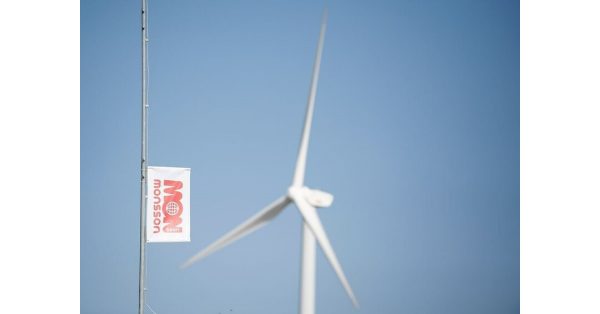As of April 2024, the Monsson battery energy storage system in Constanța County is the largest of its kind in Romania. With an installed capacity of 24 MWh – (6MW x 4h), the facility was built and inaugurated on April 2024 by Monsson.
Monsson is a company under the Monsson Group, that has been developing and owning renewable energy projects since 1997. The company has become a major wind farm developer countrywide and it has more than 5 GW projects in its portfolio.
According to the developer, the Monsson battery energy storage system concept is modular and suitable for large-scale applications. It features lithium-ion batteries produced locally by Romania’s Prime Batteries Technology and controlling software created by Monsson.
The storage unit, which is the first stage of a 216 MWh project that is set to be installed before the end of the year in the same location, is charged with energy produced by the operational 50 MW Mireasa Wind Park and the under-construction 35 MW Gălbiori 2 photovoltaic power plant project. The latter is set to be connected to the grid by the end of 2024.
Significance of the Monsson battery energy storage system
According to Bogdan Bădoi, Electrical Engineer at Monsson Group, the entire power generation and storage system will supply energy to the national grid at any given time and at the same time ensure the elimination of wind and PV energy volatility.
“In addition,” Bădoi said “it will make the cost side of energy more efficient by storing at times of load on the system and delivering at off-load. With more and more renewable units coming on stream,” the Electrical Engineer at Monsson Group continued, “there will be a need for stability in the system.”

Sebastian Enache, a Monsson board member on the other hand said that the project is reducing the volatility of renewable energy and will lead to lower electricity bills for end consumers.
“With the BESS project, we are testing the functionality of the battery to demonstrate the immediate benefits of storage facilities attached to renewable energy sources such as wind and solar. The end game is to promote such solutions both in Romania and across Europe,” said Enache.
Noteworthy, the decision to invest in this storage system was taken by Monsson Group for technical reasons as well as to help achieve the decarbonization targets set by the European Commission.
Prove of Romanians’ capacity to be part of the European Union’s transition to zero emissions
According to Corina Popescu, an Energy specialist, the Monsson battery energy storage system project in Constanța is 95% Romanian. It thus proves the country’s capacity to be part of the European Union’s transition to zero emissions and her commitment to her plan to generate approximately 36% of her energy from renewable energy sources by 2030.
Reportedly, the country’s first renewables auction under a contract-for-difference scheme is forthcoming.
Also Read
Nofar partners with LONGi for 576-MW Romania solar project
Hatboru unveils pipe plant in Romania
Polenergia to take control of 686-MW Romanian wind portfolio

